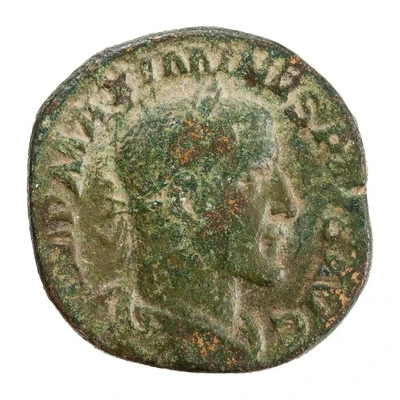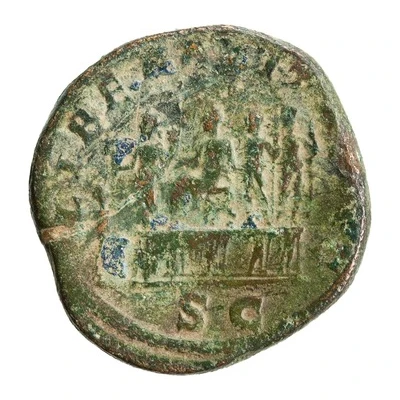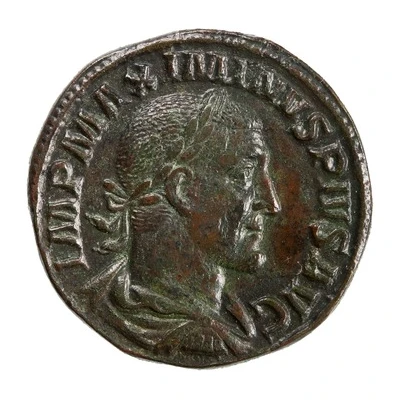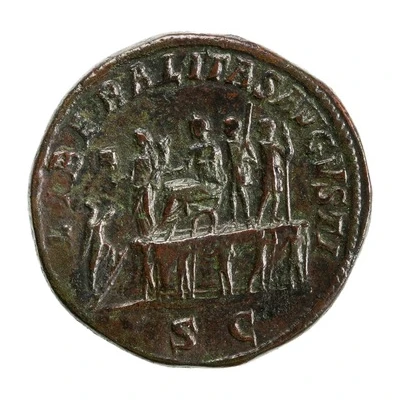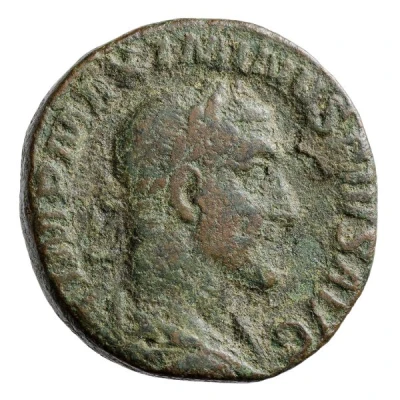
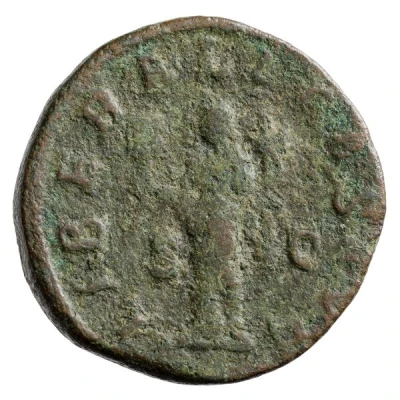

© Münzkabinett der Universität Göttingen (CC BY-NC 4.0 DE)
Sestertius - Maximinus Thrax LIBERALITAS AVG S C; Liberalitas
| Bronze | 20 g | 31 mm |
| Issuer | Rome › Roman Empire (27 BC - 395 AD) |
|---|---|
| Emperor | Maximinus I Thrax (Gaius Julius Verus Maximinus) (235-238) |
| Type | Standard circulation coin |
| Years | 235-236 |
| Value | Sestertius (⅛) |
| Currency | Antoninianus, Reform of Caracalla (AD 215 – 301) |
| Composition | Bronze |
| Weight | 20 g |
| Diameter | 31 mm |
| Shape | Round (irregular) |
| Technique | Hammered |
| Orientation | Variable alignment ↺ |
| Demonetized | Yes |
| Updated | 2024-10-05 |
| Numista | N#280298 |
|---|---|
| Rarity index | 100% |
Reverse
Liberalitas, draped, standing left, holding abacus in right hand and cornucopiae in left hand.
Script: Latin
Lettering: LIBERALITAS AVG S C
Translation:
Liberalitas Augusti. Senatus Consultum.
The liberality of the emperor. Decree of the senate.
Comment
Mass varies: 14–24.39 g;Diameter varies: 30.65–31 mm;
Example of this type:
Münzkabinett der Universität Göttingen
Source:
Online Coins of the Roman Empire (OCRE)
Interesting fact
One interesting fact about the Sestertius - Maximinus Thrax (LIBERALITAS AVG S C; Liberalitas) coin is that it features an image of the Roman goddess Libertas, who represents freedom and liberty, on its reverse side. This is significant because it highlights the importance of individual freedom and the idea of liberty as a core Roman value during the reign of Maximinus Thrax. Additionally, the coin's design and imagery may have served as a symbol of the Roman Empire's commitment to protecting and promoting freedom throughout its territories.
